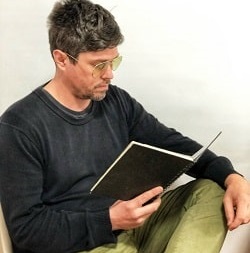University of New South Wales Sydney engineers have created a novel fire detection system that is available at a fraction of the cost of other models, and it does so by taking advantage of changes in Wi-Fi signals.
Developed by a team of electrical engineers and telecommunications experts led by Professor Aruna Seneviratne and Dr Deepak Mishra, the system uses artificial intelligence to monitor Wi-Fi signals and detect fire in real-time.
The device is claimed to be more accurate than current detection systems, primarily based on thermal vision and thus prone to false alarms caused by hot objects like radiators or clogged exhaust pipes.
A recent test in the Sydney Harbour Tunnel showed how well this product performs. When the system was presented with a real fire, it correctly identified the hazard and alerted authorities within seconds.
The UNSW team is now working on commercialising their invention, and they hope to see it rolled out in public spaces and workplaces shortly.
“This is a potentially life-saving technology that could be used in a wide range of settings, from commercial office buildings to public transport hubs,” says Professor Seneviratne.
“It’s affordable, it’s easy to install, and it has the potential to make a real difference to fire safety.”
The system is based on a concept known as “Wi-Fi sensing”, which uses changes in the strength of Wi-Fi signals to detect movement.
This technology has been used before, but the UNSW team’s innovation is how they’ve used it to create a fire detection system.
“We’ve developed an algorithm that can distinguish between the signal changes caused by a fire and other sources of interference, like people walking past or equipment being moved around,” explains Dr Mishra.
“This means we can avoid false alarms, which is a major issue with current fire detection systems.”
This technology has the potential to save lives by providing an affordable and easy-to-install fire detection system that is more accurate than current models. The UNSW team is currently working on commercialising their invention, and they hope to see it rolled out in public spaces and workplaces shortly.

More Stories
Australia-China Tensions: Following the Chinese Ambassador’s Speech, the Twitter Assault Fizzles
A Twitter botnet began promoting YouTube videos that falsely claimed the ABC was an Australian propaganda website less than a...
Cloud Adoption: Accelerating the Evolution of Healthcare System
The transmission of computing resources via the Internet, as opposed to on-site, is called cloud computing. The healthcare sector is...
Can a VPN Safeguard Your iOS Device?—Apparently Not
A VPN will protect your data, but it won't necessarily keep hackers out of your device. Most VPN services don't...
Update Your iPhone, Mac, or iPad Now to Fix Zero-Day Exploit
Apple has released its Safari 15.6.1, which fixes a zero-day exploit discovered last week. The vulnerability allowed hackers to execute...
Facebook Messenger Is Testing a New Feature That Lets Users Securely Store Backups of Their End-To-End Encrypted Chats
On Thursday, Meta (formerly Facebook) announced they would test a new feature that allows for secure storage of backups for...
AI-Powered Technology in the Workplace: Does It Provide Employees With Safety and Protection?
Artificial Intelligence (AI) that uses cameras for workplace monitoring to check for health and safety violations for worker protection and...


